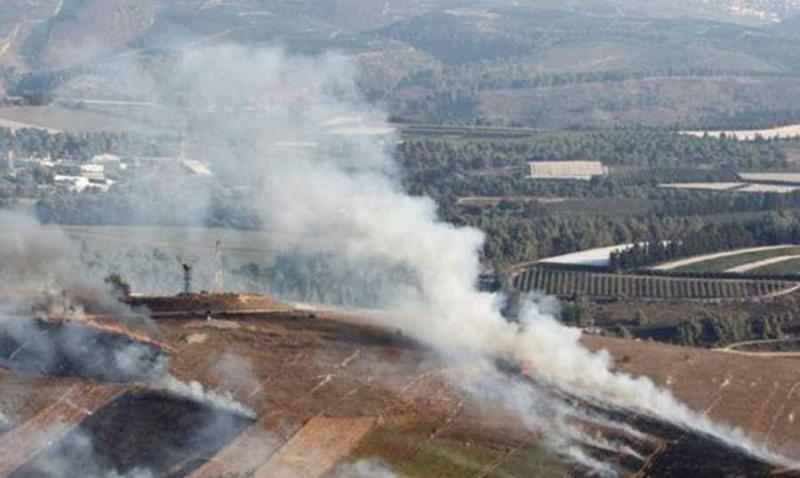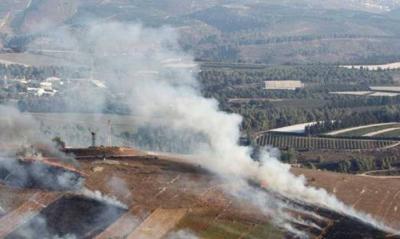The confrontations in southern Lebanon manifest as a burning hub that sways with the wind without extinguishing, and as diplomatic communications and shuttle diplomacy intensify, so does the flame. It has taken on a shape resembling a commando operation targeting immediate goals, akin to a drone strike, according to "Al-Anbaa" newspaper.
An unrelenting war has destroyed homes, forcing residents who lived near occupied Palestine to flee distances ranging from 6 to 8 kilometers, in addition to completely remote targets, as if the aim is to eradicate the means of life in a region that will likely appear empty and disarmed after the war concludes.
On the ground, Hezbollah announced that it targeted a gathering of Israeli soldiers around the Ramim barracks with rocket fire. The Israeli army shelled the outskirts of the town of Markaba, and Israeli media reported that air raid sirens sounded in the settlements of Kfar Gil'ad, Al-Manara, Margaliot, Maskaf Am, and Kiryat Shmona in the north, following the landing of three rockets from Lebanon on the Margaliot settlement.
On the other hand, within Lebanese territory, the issue of Damascus’s objection to the observation towers established by Britain in 2014 at the Lebanese-Syrian border, which it considers a threat to its national security, remains a focal point in political discussions, alongside the French message.
Foreign Minister Abdullah Bou Habib confirmed in a statement via Voice of Lebanon Radio that Lebanon does not accept these towers to be perceived as threatening actions towards Syria, reiterating that their primary objective is to monitor the borders and stop infiltration and smuggling activities.
Regarding the French message, Bou Habib stated that Lebanon is still searching for the appropriate response to the French paper aimed at finding a solution for the situation in the south, which outlines three phases for implementing UN resolution 1701 and stabilizing southern Lebanon following a ceasefire. He expressed hope for a quick response, mentioning a series of French visits to Israel in this context, without Lebanon receiving any Israeli approval thus far.
Thus, there is a serious effort underway in responding to the French message, and according to "Al-Anbaa," it is expected that the behind-the-scenes communications will yield French praise for the official Lebanese response, which, in principle, Paris does not object to, as it is not distant from the realities of the Lebanese position, particularly regarding points of convergence and divergence, and the separation or connection between what is happening in the south and the war in Gaza, while taking into consideration the Lebanese people's desire to restore calm to the south.
However, there is a reality imposed by the loss of over 220 victims and the destruction of approximately 9,000 homes, whether totally or partially, in addition to the burning of 100,000 olive trees and the displacement of 90,000 southern residents.
On the Lebanese front, the relationship between the Free Patriotic Movement and Hezbollah appears to be oscillating, with agreements and disagreements intersecting in places, to the extent that there seems to be an almost total rupture between them, leading to the conclusion that it is moving forward with policies differing from past situations—relationships characterized by neither conflict nor agreement.
This can be inferred from the stances of Maronite Patriarch Bechara Al-Rahi, the Archbishop of Beirut and its suburbs for the Greek Orthodox, Elias Audi, former president Michel Aoun, and leader of the Free Patriotic Movement, MP Gebran Bassil, along with the parties orbiting them concerning the presidential file and the connection between southern Lebanon and the war on Gaza.




